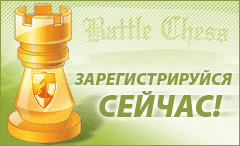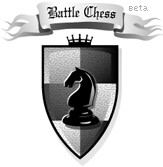Правила классических шахмат |
Movement
Назад | Оглавление | Вперед
Each player has control of one of the two sets of colored pieces and are typically referred to by the nominal color of their respective pieces, i.e., White or Black. White moves first and, as in most board games, the players alternate moves. Making a move is compulsory, it is not legal to "pass", even when having to move is detrimental. Play continues until a king is checkmated, a player resigns, or a draw is declared, as explained below. In addition, if the game is being played under a time control, players lose if they exceed the time limit.
The official chess rules do not include a procedure for determining who plays White. Instead, this decision is left open to tournament-specific rules (e.g. a Swiss system tournament or Round-robin tournament) or, in the case of non-competitive play, mutual agreement, in which case some kind of random choice is often employed.
Basic moves
Each chess piece has its own style of moving. Moves are made to vacant squares except when capturing an opponent's piece.
With the exception of the knight, pieces cannot jump over each other. When a piece is captured (or taken), the attacking piece replaces the enemy piece on its square (en passant being the only exception). The captured piece is thus removed from the game and may not be returned to play for the remainder of the game. The king cannot be captured, only put in check (see below).
- The king can move exactly one square horizontally, vertically, or diagonally. At most once in every game, each king is allowed to make a special move, known as #castling, see below.
- The rook moves any number of vacant squares vertically or horizontally. It also is moved while castling.
- The bishop moves any number of vacant squares in any diagonal direction.
- The queen can move any number of vacant squares diagonally, horizontally, or vertically.
- The knight moves to the nearest square not on the same rank, file, or diagonal. Equivalently, the knight moves two squares like the rook and then one square perpendicular to that. Its move is not blocked by other pieces, i.e. it leaps to the new square.
- Pawns have the most complex rules of movement:
-
- A pawn can move forward one square, if that square is unoccupied. If it has not yet moved, the pawn has the option of moving two squares forward provided both squares in front of the pawn are unoccupied. A pawn cannot move backward.
- Pawns are the only pieces that capture differently from how they move. They can capture an enemy piece on either of the two spaces adjacent to the space in front of them (i.e., the two squares diagonally in front of them), but cannot move to these spaces if they are vacant.
- The pawn is also involved in the two special moves en passant and promotion.
Назад | Оглавление | Вперед
|

Зарегистрированных пользователей: | 41255 |
Активных пользователей: | 23 |
Пользователи онлайн: | 63 |
Команд: | 44 |
Сыграно боевых партий: | 162816 |
Сыграно классических партий: | 253097 |
Незавершенных боевых партий: | 0 |
Незавершенных классических партий: | 0 |
Боевых расстановок в базе: | 63919 |



|

